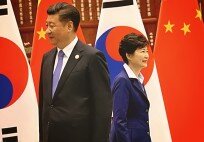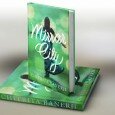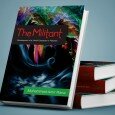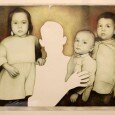By Nadeem Alam –
Extravagant ideas, new mediums, half-mastered techniques, energetic gestures and never-ending verbose talks, this is what you expect at a degree show of an art institution. However, the thesis show of MFA Visual Arts at the College of Art and Design, University of the Punjab Lahore, attracted visitors, art-lovers and art critics with some serious implementation of the learnt academic skills and sheer talent, categorically in sculpture, graphic arts and painting.
Modern-day sculpture has crossed the boundaries of conventional skills and substance of stone, wood and metals, and has adopted a verity of materials along with new possibilities of depicting personal narrative details in three-dimensional artworks.

 Asad Ali Abid executed a range of wired sculptures which, to be honest, should be called installations, titled as ‘the scaffolding’. He tried to describe the obvious and the hidden scaffoldings that exist out and inside every human being and, which can put together every fragment of an individual to help maintaining his or her shape and composure. The artist carried out various shapes by weaving and knitting the iron-wires with each other.
Asad Ali Abid executed a range of wired sculptures which, to be honest, should be called installations, titled as ‘the scaffolding’. He tried to describe the obvious and the hidden scaffoldings that exist out and inside every human being and, which can put together every fragment of an individual to help maintaining his or her shape and composure. The artist carried out various shapes by weaving and knitting the iron-wires with each other.
In another interesting installation, Saher Jamil used PVC pipes for her desired imagery. She smoked, melted and cut the various size pipes as figures; sitting, standing, dancing, smoking and cheering―alone, as couples and in groups.
The season of dry fruits is almost over, but not for Maleeha Zafar, who carved, scratched and shaped the walnuts to create a series of miniature sculptures. Moreover, she also utilized the hard walnut shells as part of the meticulously carved faces, skeleton, staircase and human figures, as a carrier of her perception -in the tangible form.
A large-scale installation by Naeem Qazi was inspired by Surah Aa’shuraa of the holy Quran. This work was rousing in its magnitude, but the required communication that an art piece should possess, was on a lower tone.
On the other hand, Atia Javed and Rabia Ashfaq explored the wooden medium. Atia presented her ideology through the quiescent potential of home and office furniture, which influence, inspire and affect our character, attitude and disposition, without attaining our attention. Rabia Ashfaq, with an installation of wooden stairs, commented on the philosophy of ascending up and descending down with the much debated concept of “rise and fall”. Both Atia and Rabia altered the position, shape and practicality of furniture and stairs to negate the usefulness of these equipments.

 Naureen Kausar, on the other hand, used her skills to represent the everlasting phenomenon of fear linked with darkness while Shehzad Khan commented on the current socio-political situation of Pakistan with the help of cannon firing bubbles in a metaphorical manner. Nimra Khan used pet-bottles to create an unusual pathway, showing the challenges and roughness of the journey of life.
Naureen Kausar, on the other hand, used her skills to represent the everlasting phenomenon of fear linked with darkness while Shehzad Khan commented on the current socio-political situation of Pakistan with the help of cannon firing bubbles in a metaphorical manner. Nimra Khan used pet-bottles to create an unusual pathway, showing the challenges and roughness of the journey of life.
In the graphic arts section, the young students tried out the large-size prints to negate the conventional scales, devotedly associated with printmaking. Hira Shakil used the symbol of a jellyfish to personify the everlasting image of the woman and all the related dogmas, myths and fantasies. She related the transparency of the jellyfish to represent the fragility and apparent beauty of a female while the venomous stings of the jellyfish symbolized the negativity and harmfulness, related with the female characters in mythos and folklore.
Samia Naeem put together five frames, juxtaposing the imprints of a large human foot. She utilized the footprints with the concept of a journey that remains alive in memories. Therefore, Samia represented the vanishing memories indirectly through the imprints of footsteps.
 Shumaila Khan, in a very satirical manner, used the negative metaphor of a crow to personify modern-day anchorpersons on various news channels. She exploited the nature of a crow to make unnecessary noise over trifles and applied it on the TV anchorpersons. In contrast to this satire, Shahid Anjum tried to explore the hidden persona of individuals by creating various light effects and utilizing them to carry the notation of duality. Anjum displayed eight stages of realization; from the self-realization to claim freedom in context with human sufferings. Another experimental work by Maryam Emmad, was music-based rendering of light-prints; spontaneous to the music-listening and its effects on the artist.
Shumaila Khan, in a very satirical manner, used the negative metaphor of a crow to personify modern-day anchorpersons on various news channels. She exploited the nature of a crow to make unnecessary noise over trifles and applied it on the TV anchorpersons. In contrast to this satire, Shahid Anjum tried to explore the hidden persona of individuals by creating various light effects and utilizing them to carry the notation of duality. Anjum displayed eight stages of realization; from the self-realization to claim freedom in context with human sufferings. Another experimental work by Maryam Emmad, was music-based rendering of light-prints; spontaneous to the music-listening and its effects on the artist.
Nida Iftikhar used printmaking to explore psychological disorders of Schizophrenia and affiliated hallucinations. She used symbols and images to conclude her statement in a scientific yet artistic way.
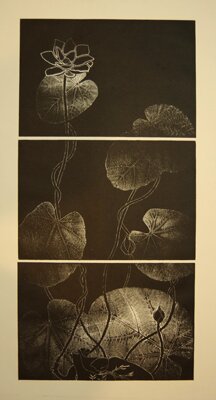 Literary inspiration was another feature of the graphic arts section as Sohaina J. Elia tried to narrate the perplexing concept of “Hast-o Neest” (Existence and Non-existence), through her imagery with the help of Allama Iqbal’s poetry whereas Fatima Naeem applied descriptions and symbols from the ‘Alice in Wonderland’; by personifying herself as the Alice, Fatima expressed her psychological encounters.
Literary inspiration was another feature of the graphic arts section as Sohaina J. Elia tried to narrate the perplexing concept of “Hast-o Neest” (Existence and Non-existence), through her imagery with the help of Allama Iqbal’s poetry whereas Fatima Naeem applied descriptions and symbols from the ‘Alice in Wonderland’; by personifying herself as the Alice, Fatima expressed her psychological encounters.
In the painting section, Aqeel Abbas experimented with a synthesized technique of rendering feet, hands and fingers clasped together, in a very unusual visual perspective. He opted for mixed media to create linear texture of skin as it appears under the magnifying glass. However, the compositions of these ordinary subjects were very suggestive and somehow, evocative!
The same suggestive approach was adopted by Istrahat Waheed, who commented on the general perception of the cinema-hoarding in our society. She used the male and female characterization of the billboard art in reverse, by piercing paper-sheets against light instead of drawing them in black granite, to present the masculine figures as the central and sensuous image, contradicting the timeless sensuality, linked with the female.
Saba Islam used birds and feathers, and Hira Shahid painted eagle metaphorically to decipher their concepts while Saneeha Rehman explored Jharoka in reference with history and the stigma of the veil that has always been coupled with it. Farhana Rasheed unveiled the invisible world of microscopic images of the painting-canvas. A feeling of loneliness and nostalgia forced Anum Hassan to paint her own idiom of ‘life and death’ which she carried out in a Pahari Miniature style. Same was the case for Kalsoom Javed and Parwasha Qayyum as both the painters described their very personal feelings of life; Parwasha shared her understanding of being one of the identical twins whereas Kalsoom addressed the social-disgrace associated with the marriage process that a female goes through in our society.
This show not only provided the visual pleasure to the visitors, but also made a very strong statement regarding academic art in Pakistan in context with modern-day techniques, processes and themes.
The writer teaches Art History at Punjab University College of Art & Design, Lahore




















































